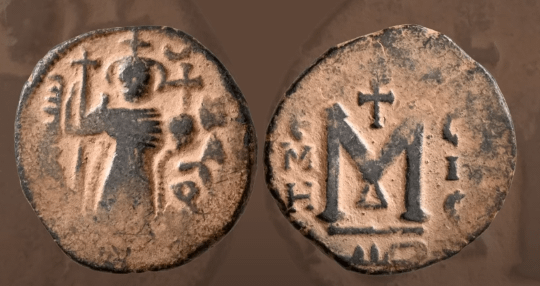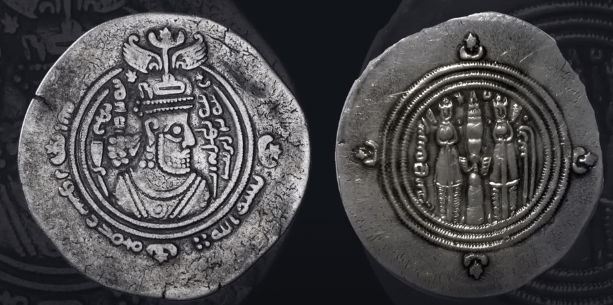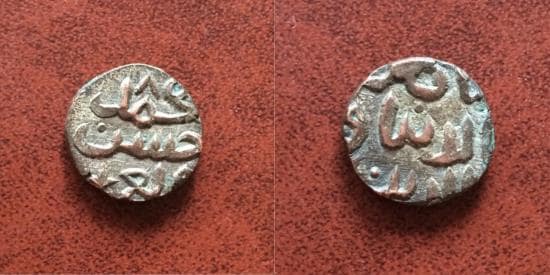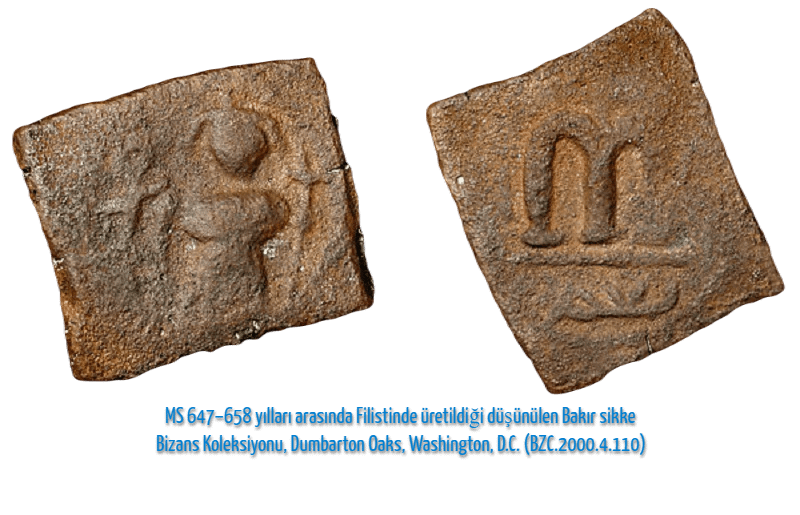Summary of which Muhammad article:
There is limited information about the life and identity of the Islamic Prophet Muhammad. Historical sources are scanty and contradictory. This article explores the true identity of Muhammad and possible parallels in history. Focusing on geography and political relations, it shows that Arabia during Muhammad's lifetime included Iraq and Syria. The departure of the Jews from Edessa and their migration to Hira prepared the appropriate environment for the rise of Muhammad.
He defends the thesis that Muhammad could be Iyas bin Qabisah, the governor of Hira. According to this thesis, Iyas bin Qabisah united with the Arabs after being dismissed by the Persians and took the title of Muhammad. He also argues that the origins of the Quran are based on political expediency rather than divine revelation and are influenced by Jewish, Christian and Zoroastrian beliefs.
In conclusion: Although it offers a new perspective to the discussions about the identity of Muhammad and the origin of Islam, it is open to discussion.
Which Muhammad?
Information about the life of the Islamic Prophet Muhammad is quite limited. Although there is basic information such as his father's name, that he grew up as an orphan and that he was a poor tradesman, there are no historical sources that provide detailed information about his family tree and life.
Unknowns and Lack of Resources
Information about him is generally based on rumors rather than official sources. In fact, most Muslims do not know that Muhammad is a title, thinking that Muhammad's real name is Mahmud. Although there is written evidence and chronicles of Muhammad's existence, it is unclear whether the Muhammad in these records is a real person or someone else using the title "Muhammad".
Researching Muhammad in History
In this article, we investigate who Muhammad was and the real Muhammad, which has parallels with Muhammad in history. In this quest, records and chronicles from the early periods will be examined. Considering that there was no religion called Islam in the Arab geography in the early periods and that historical records were generally kept by Christians, Christian sources will also be a part of this research. Those who act prejudiced by resorting to the cliché of not trusting Christian sources can continue to live by accepting hadiths and narrations as historical reality or historical sources.
The Importance of Geography and Political Relations
Although opinions and sources about who Muhammad might be will be shared, no definitive claims can be made. However, we will look for one with serious parallels between them. Since the subject is closely related to geography and political relations, the subject will be approached from this perspective. The region of Iraq and Syria was called Arabia for a long time. Osroene, or Edessa region, whose capital is Şanlıurfa, is located in the northeast of Syria and Northern Iraq, between the Euphrates and Tigris rivers. This region was a place where not only Arabs but also other communities lived. Historian Plutarch described the second Abgar as the chief of an Arab tribe and called Abgar "the king of the Arabs". For this reason, the place that Roman sources call "Arabia" should not be understood only as present-day Arabia.
Departure of the Jews from Edessa
Bishop and historian Sebeos, one of the important sources about Armenia and the surrounding regions, tells that 12 people representing all Jewish tribes gathered in the city of Edessa. Seeing that the Persian troops had left the city in peace, the Jews closed the gates, fortified themselves and did not allow anyone to enter. When the Byzantine Emperor Heraclius took action to take the city, the Jews realized that they could not face military resistance, so they agreed to make peace and appeared before Heraclius. Heraclius ordered the Jews to return to their own place.
Jews “Returning to Their Own Places”
The phrase Jews “returning to their homeland” could mean either returning to Israel or returning to Iraq, where the Jews lived until the Mongols occupied Baghdad in 1258. Historian Sebeos tells that in the continuation of the incident, the Jews crossed the desert and headed towards Ishmael's sons and called the Arabs for help.
Hira: Capital of the Lahmis
This is Hira, the capital of the Lakhmis, south of Tashkent. Hira is the city known today as Kufa. Ahudemmeh, a member of the Syriac Orthodox church who lived in Mesopotamia in the late 6th century and known as the apostle of the Arabs, wrote about these nomadic peoples. These people, who lived in tents between the Tigris and Euphrates, were superstitious and described as the most ignorant of all people on earth. The place where these people lived was east of Callinicum, formerly known as Raqqa in Syria, located in the north of Iraq.
Political Relations Between Arabs and Persians
There were conflicts between Arabs and Persians. While the Persians saw the Arabs as an obedient nation, the Arabs called the Persians "Persian" and saw them as tyrants. By the end of the 6th century, the Lahmids had fallen out of favor with the Sassanid Empire. This was because the Lahmis wanted complete independence. The largely Christian households among the Lakhmis rejected Iranian attempts to convert them to the Sasanian religion. The fact that Numan openly adopted Nestorian Christianity was effective in the Lahmis losing the support of the Persians.
Numan's Assassination and Aftermath
Numan was assassinated by the Sassanid Emperor Khosrow Parviz around 602. This incident was cited as the reason for the Lahmis to end the Haki rule. After the murder of Numan, the person appointed in his place was Iyas bin Qabisah, a Christian Arab. Iyas bin Qabisah helped Khosrow control the Lahmi region. When the Persians faced the raids of nomadic Arabs, the problems between the Sasanians, that is, the Persians and the Arabs, around 613 AD It caused the Battle of Zuqar.
Direct Rule of Hira and the Saracen Revolt
Following this battle, the Persians decided to rule Hira directly around 617 and deposed Iyas bin Qabisah. He was replaced by Azad Beh. During this period, some Arabs who showed loyalty among the Lahmis left Hira and began to cooperate with the Arabs against the Persians. This situation paved the way for the Saracen Revolt of 61. Presumably, the person elected as King 4 years later was Iyas bin Qabisah.
Jews and Mahmet
Explaining that the Jews contacted the Sons of Ishmael and asked for help, Historian Sebeos wrote: Despite the close relationship between the Arabs, they could not reach a consensus due to their differences in belief. One of them, a merchant named Mahmet from the sons of Ismail, stood out. Mahmet, who was especially knowledgeable about the history of Moses, supposedly by God's command, gave a sermon to the Jews about the path of truth and helped them recognize the god of Abraham. Mahmet told them all that they came with the order from the Almighty and ordered them to unite in faith. Names like Ahmet and Mahmet are basically titles, not names; All of them have their roots in the letters "m h d". In Seos' record, we see that Mahmet brought together Arabs with different beliefs and gods and united them with the Jews.
Record of John bar Penkaye
John bar Penkaye, an Eastern Church writer who lived during the reign of the 5th Umayyad Caliph Abd al-Malik, wrote: At first they were so devoted to Muhammad, their instructor, that they imposed the death penalty on anyone who was seen to act insolently against his laws. Arabs who came into contact with the Jews and followed their laws would begin to be circumcised like the Jews. Over time, they abandoned paganism and embraced the law of Moses, and many of them would become Christians.
Muhammad and His Departure from Mecca
Now, let's look at a few early sources to look for someone who was expelled from his city and then returned in triumph, in keeping with the tradition of Muhammad's departure from Mecca. For this, we will pay attention to the dates, because there is confusion regarding chronology in the sources.
Chronological Contradictions in Sources
Jacob of Edessa, born in 640, writes that Muhammad, the first king of the Arabs, began to reign in 622. Another source, the Adan Chronicle, states that Muhammad began to reign between 620-627 and reigned for 7 years. On the other hand, in the History of Zukin, a medieval chronicle written in Syriac, it is written that the first king was Muhamad, one of their own. If the person we are tracking is really the King, the statement in Edessa's chronicle "He used to go down to the lands of Palestine, Arabia and Syria for trade" must have a different meaning, or perhaps it may be referring to someone else who used the title Mahmet in that geography.
Registration of Presbítero Tomás and the Tay Tribe
The Mesopotamian Syriac Orthodox priest Presbítero Tomás, author of the 640 Chronicle, wrote: “On Friday, February 4, at the 9th hour, there was a battle between the Romans and Muhammad's Arabs in Palestine, 12 miles east of Gaza. ” Thomas mentions the year 634. The expression translated as “Arabs of Muhammad” was “Tayy de Muhamad”, that is, Tayyi of Muhammad. The Tayy, sometimes written as Tay or Tayi, were a large and powerful Arab tribe.
Who was the leader of the Tay tribe at that time? In line with the previous accounts, all four Byzantine Arab chronicles record that he was born into the noblest tribe among the community, that is, into a powerful family. It was also stated that he was an intelligent person who could predict many events in the future. In the Mozarab Chronicle, he wrote: “They appropriated Syria, Arabia and Mesopotamia by trickery rather than by the power of their leader Muhammad, and devastated the neighboring provinces. Instead of open attacks, they proceeded with secret raids. Thus, by cunning and deceit rather than force, they provoked all the border cities of the empire, and finally, shaking off the yoke from their necks, they openly rebelled.”
The Saracen Revolt and the Leadership Gap
The event in question is the uprising of the Saracens in the 7th year of Heraclius, that is, in 618. If you remember, other sources wrote that in 622, that is, 4 years after this event, one of them was elected king. This means that no particular person could stand out as a leader during this 4-year period. In 622, the person named Muhammad, whom the Jews encountered, came to the fore as a leader after that gap.
The Divided Kingdom and the Rise of Muawiyah
Let's look at the record kept by John bar Penkaye: “God punished the children of Hagar for the destruction they had caused. He divided their kingdom into two parts by giving them two leaders at the beginning of their kingdom. This was so that we could understand what our savior said; They united until they made the whole world subject to themselves. But when they had rested from the battle, they fought one another; In other words, we should find two states that were governed almost interdependently, countries that were in alliance with each other, but that separated and became completely enemies.
The rest of Penkaye's account says: “He said, 'The superiority belongs to us and the king must be chosen from among us.' Those in the east, however, opposed them and claimed that it was their right. As a result of this conflict, they fell into each other. After a great massacre took place among them when they did things their own way, the victory went to the westerners, called the Umayyads. Among them, a man named Muawiyah took the reins of government of two empires, Persia and Rome. “During his reign, justice improved and great peace was established in the countries under his rule, and everyone was allowed to live as they wish.”
Two Leaders and Muhammad
From Seos records, we can see that Muawiyah took power and became the leader of the Arabs. However, in the early days there were two leaders and one of them was Muhammad. In the same vein, the Maronite Chronicle recorded in 665 writes: “In July of the same year the emirs and many Arabs assembled and gave their allegiance to Muawiyah. Then an order was issued that his sovereignty should be acknowledged in all villages and cities and he should be declared king. He also minted gold and silver, but they were not accepted because they did not have crosses on them. Moreover, he was not crowned like other kings, he established his throne in Damascus and did not want to succeed Muhammad.”
Iyas bin Qabisah: The Real Muhammad in History?
Could the Muhammad mentioned in these events be Iyas bin Qabisah, who was dethroned while he was a king, exiled from his country, and later returned and conquered the country that was taken from him? Isn't it similar to the narrative of Muhammad going to Medina and then returning to Mecca after the Quran and capturing it? Is it a coincidence that, according to Islam, Muhammad was born in 622, the year of Hijra? Iyas bin Qabisah, after being stuck between Byzantium and Persians, had to leave Mecca in 622, when he changed sides and united with the Arabs who rebelled.
City of Hira and Refereeing
However, it was the city of Hira, not Mecca. Just like other Christian and pagan Arabs, he was escaping from the oppression of the Persians, and he was the one who arbitrated and fortified the Jews, starting from the vicinity of Urfa. This is how the narratives about Muhammad fortifying the ground and acting as a referee reached Medina. While the events basically took place in Hira, everything was changed or disconnected from the so-called historical narratives written and created in the palaces years later. In the Battle of Hira, Khalid Bin Velid attacked the Lahmis under the rule of Iyas bin Qabisah and captured the city of Hira.
Contradictions of Narrations and the Death of Muhammad
By right, if Muhammad is Iyas, then how can he be against Khalid Bin Velid? At this point, it should be reminded that most of the narratives about the early history of Islam are based on narration. Those written as history books emerged hundreds of years later and a new history was officially written. According to Islamic tradition, he fought against Muhammad in the battles of Uhud and Trench. Just a 4 or 5 year deviation in narratives changes everything. Just as you will soon see about the date of Muhammad's death.
Also, it is not known how it happened, but we will soon see the reflections of the two narrations in Bukhari that Muhammad and Iyas are the same person. According to Islam, Muhammad died in 632. How could he participate in the Battle of Hira in 633? According to Islam, the date of Muhammad's death is also recorded as 634 or 636. Moreover, these are not hadiths or narrations, but historical texts. A Greek text, written during the Arab invasion of Syria between 632 and 634, mentions the emergence of a false prophet among the Saracens and describes him as a false prophet on the grounds that prophets do not come with swords and chariots.
Another Syrian text stated that the invasion of the Arabs and Muhammad took place in 634. A Syriac manuscript dated to 636 mentions that Muhammad and the Arabs conquered Syria and advanced as far as Cile, destroying the villages. Iyas is mentioned in many sources, but his name is written as ksha or kabishe, not Qabisah.
Because there are no vowels in Arabic, it is quite normal for the names used or written in old Arabic to be read or written differently after years. What is important is the root of the word. The narrations included by Bukhari indicate that the name of the person who used the title Muhammad was actually Iyas bin Qabisah, Ibn Abi Kebisha or Kebisha.
Narrations of Bukhari and Iyas bin Qabisah
Now let's look at the first narration: Abu Sufyan said: “Heraclius sent for me while I was in Ilya. Then he asked for the letter of the Messenger of Allah and when he finished reading it, there was a big noise around him, voices were raised and we were asked to leave. When I was taken out, I was surprised by the case of Iyas bin Qabisah to my friends. "He became conspicuous, I said, because the king of Esfar was afraid of him."
Another very long narration narrated by Abdullah bin Abbas talks about the same event and writes in the last part as follows: “Undoubtedly, the issue of Iyas bin Qabisah has gained strength. The King of Beni Esfar is afraid of him, that is, Heraclius, who read the letter of the Arab leader named Muhammad, the prophet of Islam, is afraid. Abu Sufyan also says that he is afraid of the Byzantine King Iyas bin Qabisah. Of course, narrations and hadiths are narrated associating Muhammad with Islam. However, I would like to remind you again that there was no religion called Islam as you know it in the Arab geography until very late. “I will address that issue later.”
Iyas bin Qabisah: An Ordinary Shepherd?
Presbítero Tomas used the phrase “the tayyayes of Muhammad”. Coincidentally, he wrote that Iyas bin Qabisah (Muhammad) told the Arabs to unite under his leadership and follow the law of Moses. If he can say this and the Arabs listen to him and do what he says, there is no way he can be an ordinary shepherd. No one, especially people from tribe to tribe, would listen to an ordinary shepherd and follow his orders. As written in historical records, he had to be a king, prince or governor, and come from a noble family. He was already a ruler, but he came to power neither through the Lahmi lineage nor through his dynasty.
Those who elected him and made him the Governor of Hiran, the capital of Lahmi, was one of the 18 rulers of the Lahmi Arabs of the Persians. If you remember, Qabisah, most likely the real Muhammad in history, lost the Battle of Zukar, which he fought against the Arabs by leading the Persian forces. Writing about 300 years after this period, Tabari stated that Muhammad also took part in this war and quoted Muhammad as saying: "This is the first war in which the Arabs took fair revenge on the Persians, and they could only achieve this victory through me."
Tabari's Contradictory Narration
In other words, Taberi placed Iyas bin Qabisah, the real Muhammad in history, on the side that won him, against the Persians, differently and in line with the figure of Muhammad in the religion of Islam, which began to emerge much later. Although, there is a small possibility that Iyas bin Qabisah would be against the Persians after his authority and position in Hira were taken away from him. Perhaps the real Muhammad in history is not Iyas bin Qabisah, but I certainly do not think that he was the person described in the Sirah, hadith and narration collections that started to be written during the Abbasid period.
Source of the Quran: Divine Revelation or Political Interests?
Everything in the Quran belongs to the Jewish, Christian and Zoroastrian traditions. Even the texts spoken against Jews and Christians, some of them also belong to Jews and Christians. The other part of the conflicts between the Jewish and Christian sects is the view of Christians who argue about whether Jesus is God or not and say that he cannot be the son of God. The words "nasrani" or "Nasara", which are used in the Quran and translated as Christian as a general expression, are actually related to these conflicts. There was complete chaos in the early Christian church. While some Christians were seriously polytheists, others believed that the world was not governed by God but by a lesser deity.
Again, according to some Christians, Jesus was God, and according to others, he was not. As you can see, it's a complete mess. Iyas bin Qabisah, who became Muhammad, was most likely a Nestorian or Ebionite Christian. He may also have been an ancient Nestorian Christian influenced by Ebionite views, because there were also Christians in Persian lands who abandoned the Nestorian view. It established a new formation based on the Judeo-Christian tradition and blended cultural interaction with Zoroastrian beliefs. These were the years when religions were alive and active and different views emerged or evolved. Let us now briefly look at the aspects of an active geography that are compatible with Ebionite and the Quran, respectively.
Parallels Between Ebionites and the Quran
According to the Ebionites, who spread outside the Byzantine borders to the Hejaz region, Jesus is not God, but a human and a prophet. Just like in verse 75 of Surah Maide and many other verses, they turn to Jerusalem and worship. It is written in the Quran that believers used to worship towards Jerusalem. They comply with the Saturday prohibition, that is, the sabbath warning. In no verse is it said that the sabbath provision has been abolished.
Yes, this situation is persistently ignored. Ebionites are circumcised just like Muslims, they do not eat pork and prohibited animals, they reject the trinity (as written in verse 171 of Surah Nisa), They believe that the Torah has changed. As stated in the Quran, if we come to the Nestorians, another branch of Eastern Christianity, according to them, Mary is not the mother of God, she is just a pure and sinless woman. (As in the 75th verse of Surah Al-Maidah) Jesus also has separate divine and human aspects. What Mary gave birth to was only human. In other words, Mary is not the one who gave birth to God, but the one who gave birth to Jesus. Jesus who died on the cross was human. It is mentioned in the Quran that Jesus was human. The Quran does not accept that Jesus died on the cross and says that it was shown to him that way.
Formation of a New Religion
Historical Mahmet, that is, Iyas bin Qabisah, may have partially founded a new religion based on his views. The Ebionites may have arisen as a new branch from Christians influenced by the Essenes. Because the rulers and people of Lahmi were largely Nestorians. Therefore, although the established religion was partly new, its origins and nature were based on Judaism and Christianity.
Conflict Between Byzantium and Eastern Churches
These are the beliefs found in Christians that the Byzantine, that is, the Church of Istanbul, saw as heretical. Because they did not agree with Byzantium on the issues of Jesus and Mary. In 431, Nestorius was exiled after saying that he had deviated from the Orthodox Christian faith. Nestorius's followers, who were accused of heresy, fled to Persian lands. So much so that by 550, Christianity in the Persian Empire consisted almost entirely of the Eastern Church. Lahmi Arabs, on the other hand, leaned their backs on the Sassanids for a while and found some security. Therefore, just as Byzantium,
If they saw those who adopted the views of the Eastern Churches as heretics, they also saw the Byzantines and Orthodox Christians who said that Jesus was the son of God as heretics. This is full of reflections of inter-sectarian hostility.
Reflection of Intersectarian Conflicts in the Quran
For example, the Essenes, who wrote the book of Isaiah in the Torah, insulted and humiliated the Jews of Ezra and Sadducee. Even this incident is mentioned in the Quran, where the Jews say, "Uzair is the son of Allah." The Judeo-Christian texts in the Quran basically contain the friction and hostility of these sects.
Muhammad's Diplomatic Letters and Coins
There are diplomatic letters written by Muhammad. In fact, considering that he was Iyas bin Qabisah, one of his letters was written to Hüsrev Parviz, who dethroned him and exiled him as if to take revenge after he became powerful. Byzantine Emperor Heraclius also sent a letter and invited him to his religion, because, as I said before, there were disagreements between him and Byzantium, especially regarding the nature of Jesus. The word Allah may be mentioned in his letters, because it is a normal discourse for a Christian or former Christian Arab, not a discourse unique to Islam. On some Arab coins, Mehmedean letters are seen used together with the Christian cross or Zoroastrian fire altars.
Bismillah Written Coins and Their Meanings
Yes, coins with Bismillah inscriptions are decorated with Hajj symbols. There is no problem in saying Bismillah because in Arabic “ilah” or “ellah” means God, so Bismillah means “in the name of God”. For more detailed and general information about Islamic coins, belongs to Nilüfer Damalı Foundation you can benefit from this page. You can find similar coins on many collectors' sites on the internet. I don't need to explain each of them here.
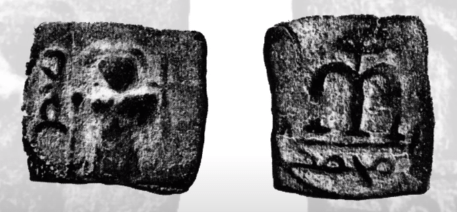
Debates on Coins
Some people make unbelievable excuses about such coins. However, claims that these coins make the Islamic state incapable of printing its own currency are ridiculous. Their claims that they ignored Islamic teachings for 70 years are equally ridiculous.
Islam’s Kitchen: Are you with me, are you with me?
In Islamic cooking, I think that Persian cuisine is a very popular dish and the Christian cuisine is one of my favorites. In this way, the food and drink can be easily prepared.
Najran Inscription and the Title of "Muhammad"
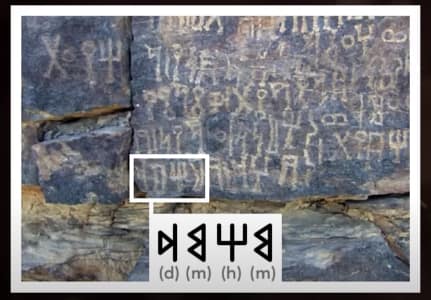
In 523, "Another Muhammad" was written on a rock in Najran. This inscription was for the protection of the heavens and the earth and to protect them from harm and debasement. This inscription was placed in the name of Muhammad and Rahman, the Lord of the Jews. As can be understood from this inscription, "Muhammad" is an adjective meaning highly praised and desired.
Additional Information About the Najran Inscription and the Title "Muhammad":
The Najran Inscription is a collection of inscriptions found in the Najran region of Southern Arabia and dating back to the Himyarite Kingdom period. These inscriptions date back to the 5th and 6th centuries AD and contain important information about the history, culture and religious beliefs of the region.
The title "Muhammad" is mentioned several times in the Najran Inscriptions. However, this title belongs to the Prophet of Islam. It has not been conclusively proven that there is a direct connection with Muhammad. This title is thought to be a name or title commonly used in pre-Islamic Arabia.
There are different interpretations of the title "Muhammad" in the Najran Inscriptions:
- Personal Name: Some researchers think that this title is the name of a specific person who lived at the time the inscription was written. However, there is no definitive information about the identity and importance of this person.
- Religious Title: Other researchers suggest that the title “Muhammad” is a title given to a respected person, such as a religious leader or seer. This interpretation seems more compatible with religious practices and beliefs in pre-Islamic Arabia.
- Prophecy: According to some theories, the title “Muhammad” can be interpreted as a prophecy pointing to a future prophet or savior. However, further research and analysis is required to prove this interpretation.
Discussions about the Najran Inscriptions and the title "Muhammad" continue. Further research and analysis is required to fully understand and interpret these inscriptions. However, these inscriptions provide important clues about the history, culture and religious beliefs of pre-Islamic Arabia.
